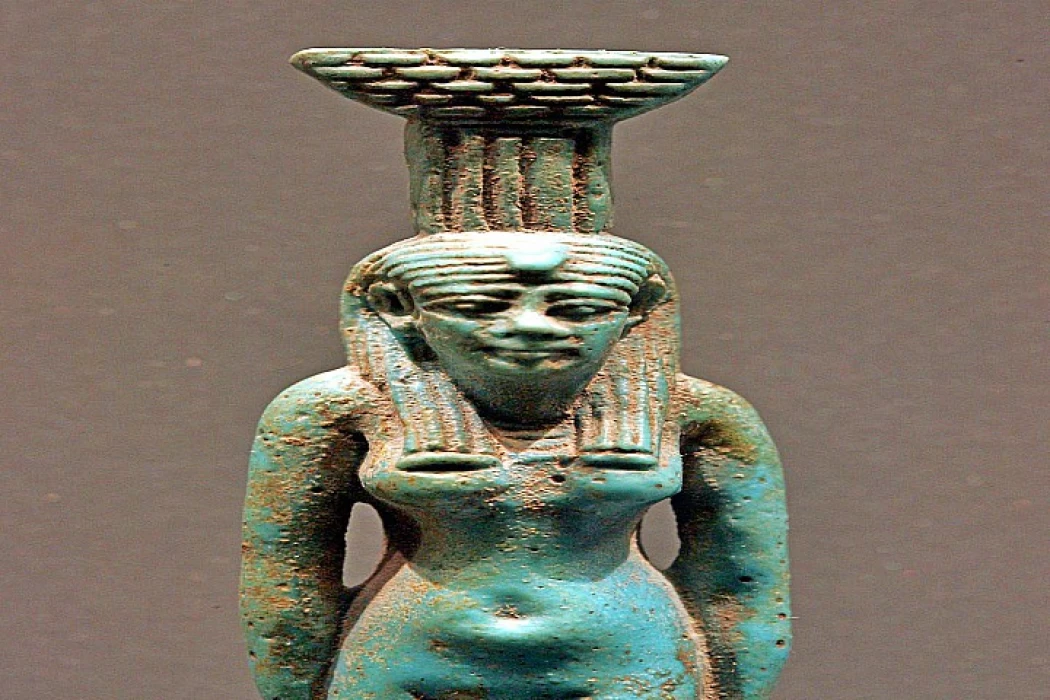
Goddess Nephthys | Mistress of the House
Nephthys: The Mysterious Guardian of the Dead in Ancient Egyptian Mythology
Many people have mixed feelings about Nephthys among the popular Egyptian gods and goddesses. She was considered a significant figure in Egyptian religion for her roles in death, safety, and the otherworld. Ancient Egyptians saw Nephthys as a goddess who protected and guided the dead in their journey to the afterlife.
In this article, Nephthys’s mythology, symbolism, religions, and history are discussed to highlight her real significance.
Mythological Origins and Family
Nebet-Het, known as Nephthys in other languages, was born as one of the children of the sky goddess Nut and the earth god Geb. She was one of the nine great deities in the ancient Egyptian group of major gods known as the Heliopolitan Ennead. Osiris, Isis, and Seth (Set) were among the siblings of Isis.
She was presented frequently as Seth’s sister and wife, the god of chaos and the desert. Still, there was often tension or simply acting as symbols in many tales. Nephthys was also believed to be the mother of Anubis, who helped with embalming and rites before death. According to some myths, Nephthys dressed up like Isis to coax Osiris into having a child, so Anubis was born as a result of identity confusion and deceit in Egyptian folk tales.
Roles and Attributes
Goddess of Mourning and Death
Nephthys is mainly remembered for the Sadness that came at the death of the god Osiris. She is comforting Isis, who is already beside Osiris, with help from her magic to bring Osiris back for a time so that Isis could become a mother to Horus. As a result, the scene was featured prominently in ancient Egypt to suggest Nephthys was there to guide souls to the afterlife.
Therefore, she was commonly mentioned during death ceremonies and covered many tombs, sarcophagi, and coffins, representing safety, cleanliness, and safe resurrection.
Protector of the Dead
While studying the spells from the Book of the Dead and others, it is clear that Nephthys was often seen as guarding those who had died. She was also there to protect the dead, standing either at the end or the beginning of their coffin, along with Isis. It was believed that their appearance gave assurance that the dead would receive care and attention even after they left their bodies.
She was connected to the canopic jars, and the one with the lungs was looked after by Nephthys and her son Hapi.
Magic and Hidden Power
Nephthys was a skilled magician, although people may perceive her as less active than Isis. It was common in Egyptian religion to view her as a person with secret and magical abilities, mainly in connection with funerals and health care. In the name “Lady of the House,” Nephthys is shown to be the spirit who oversaw all the chamber’s secrets.
Iconography and Depictions
Most representations of Nephthys include a woman wearing a basket and house hieroglyph on her head as a headdress. Wings are commonly shown on her when she stands over the dead, reaching out her arms to keep them safe.
On certain occasions, she is shown with Isis, joining the powers of grieving and looking after the deceased. Often, Nephthys is shown in the chief position, while Isis guards below her.
Worship and Cult Centers
Though Isis and Osiris were worshipped by many more, Nephthys was still valued by people in Egypt, mainly in temples and graveyards. Temples in Heliopolis, Abydos, and Philae were linked to her through her appearances in various rituals.
Nephthys was featured in the plays that showed Osiris’ passing and resurrection during the Abydos Mysteries of Osiris event.
While engaged in their rituals, people of the cult placed statues of Nephthys and Isis and wept to help restore the god.
Nephthys vs. Isis: The Shadow and the Light
Often, Nephthys is associated with Isis in a dark way, which does not suggest that she is evil. In this way, Nephthys embodies what is unknown, unseen, and between life and death. While Isis was the mother and creator, Nephthys was the person who mourned and kept watch over the things that were not visible.
With their relationship, they cultivated a state of balance and harmony within Egyptian ideas. Egyptians regarded the relationship between life and death, light and dark, mourning and rebirth as a main idea in their view of the universe.
Glasnost represents the use of symbols and accomplishments of the past.
Nephthys was thought to represent several significant symbols in ancient Egypt.
Nephthys was the ruler of passages between different lives and between this world and the afterlife.
Especially when she was winged, she defended the dead against any harm.
Isis’s grief showed how ancient Egyptians should properly express sadness and mourn their dead.
Even though the importance of Nephthys declined when Egyptian religion ended, many still find her interesting and seek to understand her. In today’s neopaganism and spiritualism influenced by Egypt, Nephthys is thought of as the protector, one who advises by intuition, and the goddess of honoured mourning.
Nephthys is literally the mistress of the house. She is one of the chief but most enigmatic deities as far as Egyptian mythology is concerned. She has a very important place in the divine pantheon, although she is always overshadowed by her more famous sister, Isis. A goddess of protection, mourning, and the afterlife, Nephthys most closely relates to death and the transformation or transition of souls.
She is one of the ancient Egyptian gods. According to mythology, she was the mother of Anubis, the god of mummification, from her brother Osiris.In another narration, Umm Anubis. She is famous for her important role in the Osirian myth.
Nephthys (Nept – Het) in the ninth of Heliopolis was the wife of "Sitt"... A wife here is not in the human, material sense, but in Egyptian mythology (which are scientific theories that explain the origin and development of the universe) the concept of husband/wife was the cosmic forces that complement each other's work. Nephthys was finishing up Set's work, which dealt with the cosmic powers that drive humans to take on material bodies and descend into the world.
Children of Geb, the earth god, and Nut, the goddess of the sky, Nephthys is the sister of Isis, Osiris, and Seth. In the myth of some Egyptians, she was the wife of Seth, the god of chaos and storms. Their union is, however, a later development in the myth, presumably to round out the divine couple; for the opposite of the husband-brother, destruction, she is pictured as a nourishing and protective goddess.
Nephthys may be represented as a human figure wearing a headdress with hieroglyphic symbols representing her name, such as a basket on top of a temple or house. Unlike some self-represented members of the Egyptian pantheon who may have animal traits, Nephthys is wholly human. This underlines her aspects of protection and mourning. Temple reliefs, tomb paintings, and funerary texts often figure her beside Isis, particularly in afterlife scenes.
Since she never appears separated from Isis, she is likely even doubled. That the union with Seth is a later elaboration of the myth, born from the desire to have two symmetrical divine couples, is also demonstrated by the fact that Nephthys, as Seth's bride, appears dull.
Nephthys has a completely human aspect and is recognized only by the hieroglyphic symbol of the name she wears on her head (the plan of a building surmounted by a basket). In this aspect, Nephthys. appears, always in union with Isis, alongside the corpse of Osiris (and each dead person becomes an Osiris, thus having the right to the care of the two deities). Even in the scenes depicting the Hereafter, she appears, always paired with Isis, at the side of Osiris, depicted either on the throne as the god of the dead or in a snake aspect; it guards the last door of the Underworld through which the sun will return to earth. These scenes are very frequent on the walls of the tombs, in the funerary scenes and papyri, and sometimes are found on the short sides of the sarcophagi, with the task of protecting Isis the chief and Nephthys.
Place of worship: Heliopolis, but she has no temple or cult. There can be no doubt that the cult of Nephthys existed in the temple and large city of Herakleopolis. A nearby life-size statue of Nephthys (currently housed in the Louvre Museum) boasts an oddly altered inscription.
The basalt image was originally placed in Madinet Habu as part of the celebration of the pharaonic-era tradition of the Sed Festival but was transferred at some point to Herakleopolis.
The god Nephthys protected her brother Osiris from her brother Set. She is one of the protective goddesses, «Isis, Nephthys, Serket, Neith» of the canopic jars containing the entrails of the deceased, known as the sons of Horus.
«Nephthys» appears in the form of a complete female with the sign indicating her and distinguishing her on her head, which no one else carries, which is a rectangular figure topped by a semicircle.
The Book of the Dead and the Pyramid Texts are collections of mortuary texts that portray Nephthys as a goddess who helps and guards the deceased as they walk through the Duat, or underworld.














